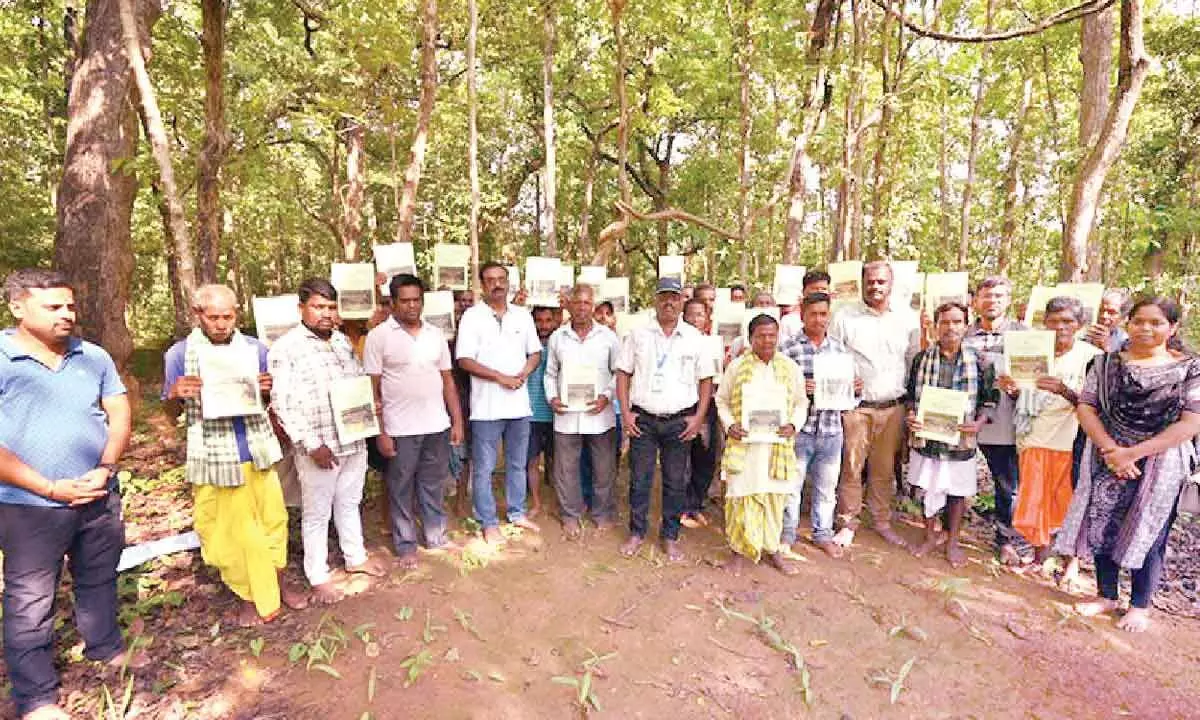Odisha accords habitat rights to three PVTGs

Odisha has become a leading State to accord habitat rights to the Particularly Vulnerable Tribal Groups (PVTGs) under the Forest Rights Act (FRA).
Bhubaneswar : Odisha has become a leading State to accord habitat rights to the Particularly Vulnerable Tribal Groups (PVTGs) under the Forest Rights Act (FRA).With the recognition of habitat rights of Juangsin tribal-dominated Keonjhar district on August 7 by the District Level Committee (DLC), Odisha has become a forerunner with three habitat rights recognised for the PVTGs, the maximum in India. On August 6, the habitat rights of Juang PVTG community of Jajpur district was approved by the DLC.
Paudi Bhuyan of Deogarh district was the first PVTG community in the State to receive habitat rights title on March 7. While habitat rights of Paudi Bhuyan have been recognised in more than 32 villages under Barkote block, habitat rights of Juangs in Jajpur district have been recognised covering 13 villages under Sukinda block and habitat rights of Juangs in Keonjhar district have been recognised covering 134 villages across four blocks.
The PVTGs have been the stewards of their ancestral lands for generations, practicing sustainable living and preserving their rich cultural heritage. This approval not only affirms their rights but also reinforces the importance of upholding the traditions and lifestyles of indigenous populations. Recognition of habitat rights under FRA is a significant step in safeguarding the rights of indigenous communities. So, the Juangs of Keonjhar will become the sixth such title awarded in India under the category along with the Juangs of Jajpur, Paudi Bhuyans of Deogarh in Odisha, Bharia PVTG in Madhya Pradesh and Kamar PVTG and Baiga PVTG in Chhattisgarh, having legal title and rights over their forest habitats.
Habitat for the PVTGs refers to an area where these communities have both spiritual and material connections. The spiritual connection implies an area that is important to fulfil the socio-cultural needs of the community. This area includes burial grounds, birth places, temples, deities, ancestral lands or areas used for any other socio-cultural purposes, such as festivals and processions. This area also includes places of customary land use for livelihood generation such as forest produce collection, fishing sources, cultivation areas and seasonal migratory lands.
Habitat rights under FRA can be defined as a bundle of rights comprising these connections with the landscape: livelihood, social and cultural practices embedded in the territory that forms their habitat.
There are 13 PVTGs in Odisha, highest among all the States and Union Territories of India.
The PVTGs inhabit 1,683 villages/settlements distributed in 285 gram panchayats under 42 blocks and 14 districts of Odisha. There are 1,79,742 households with a population of 7,73,092. All the 13 PVTGs have different socio-cultural and socio-political significance.
The SC,ST Research and Training Institute (SCSTRTI), Bhubaneswar, has undertaken the research study on mapping habitat rights of PVTGs under FRA across Odisha.
Under the guidance of SCSTRTI and with the support of partner NGO Vasundhara, the process of determining habitat rights was done by the traditional institutions of each of the PVTGs.
Out of the 13 PVTGs, the habitat rights of 9 PVTGs across 14 micro projects have been submitted at Sub-Division Level Committees (SDLC) and are at various stages of approval at SDLC and DLC level, official sources said.
ST & SC Development, Minorities & Backward Classes Welfare department Commissioner-cum-Secretary Roopa Roshan Sahoo said, “The habitat rights for PVTG communities is a remarkable achievement. We would be planning for more as a major chunk of our State’s population (around 23 percent) are tribals. Our efforts will be more focused on the welfare of these communities and especially for the PVTGs across the State.”
















